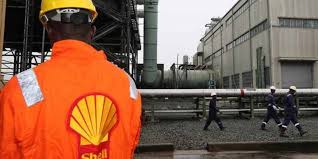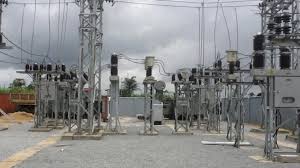Oil & Energy
‘Renewable Energy Land Rush Could Threaten Food Security’

Meeting global climate goals will require an unprecedented buildout of energy infrastructure in terms of both speed and scale. And, while the energies themselves may be renewable, their construction, production, and maintenance requires a whole lot of finite resources, from rare Earth minerals and metals to the very land they are built on.
This last issue regarding mass-scale land use and acquisition, in particular, is already one of the biggest hurdles facing the global decarbonisation transition.
As the renewable revolution picks up pace, more and more land is required for conversion to utility-scale solar and wind farms. This is becoming extremely tricky, extremely fast in a world that is increasingly competing for scarce land area, especially considering that solar and wind farms need land that is both well-suited to their particular climatic and geographic needs and large enough to make the project worthwhile.
According to a report from global consulting powerhouse, McKinsey & Company, utility-scale solar and wind farms require a whopping 10 times as much land as a typical coal or natural gas power plant. And that includes the land required for production as well as transportation of those fossil fuels.
“Wind turbines are often placed half a mile apart, while large solar farms span thousands of acres.
“The implications of this are daunting. Developers need to continuously identify new sites with increasing speed at a time when the availability of suitable, economically desirable land is getting tighter”, the report states.
And the energy sector isn’t the only sector that needs those large and sunny land plots. Renewable energy projects are often competing for some of the most valuable agricultural land, presenting serious challenges and trade-offs among two of the world’s most critical sectors.
A recent deep-diving Reuters analysis based on huge swaths of data and key stakeholder interviews reveals that the renewable energy boom risks damaging some of the United States’ richest soils in its most important farming states.
Solar farms clear huge areas of land of all vegetation, making the soil extremely vulnerable to erosion and allowing precious topsoil to simply dry up and blow away, threatening dust-bowl conditions and a total loss of future agricultural viability in affected areas.
The loss of this topsoil cannot be reversed in any meaningful timeline. “The reality is that it takes thousands of years to create an inch of fertile topsoil”, warns National Geographic, “but it can be destroyed in minutes”.
At its most basic level, it’s an issue of economics. On the whole, farmers struggle to make a profit through agriculture and largely rely on federal support and subsidies to stay afloat.
But if they sell or lease their land for conversion to renewable energy production projects, they stand to make a much bigger paycheck. Regardless of whether it’s actually the best use of the land or the best decision for the United States’ food security, it’s certainly the best financial decision for the landholder.
In a business-as-usual scenario, forecasts show that 83% of new solar energy development in the U.S. will be on farm and ranchland, according to researchers from the American Farmland Trust.
Nearly half of that land is the country’s most prime agricultural land. The non-profit farmland protection agency lobbies for what they call “Smart Solar” instead of indiscriminate solar expansion.
A sharp shift in policy will be necessary to ensure that solar expansion works alongside the farming industry to maintain critical agricultural heartlands.
“The key question for our national solar buildout is not ‘if,’ but ‘how’”, said Tim Fink, Policy Director of the American Farmland Trust.
“Our nation’s renewable energy transition is happening quickly, and solar energy is a significant part of it. We must act in the next Farm Bill to ensure that this transition benefits farmers, farmland, and farm communities”, he stated.
One such solution is the employment of agrivoltaics, which are synergistically combined solar and agriculture systems. In this symbiotic relationship, crops benefit from the shade of solar panels, while the panels are assisted by the natural cooling that the plants provide as they release water through transpiration, which serves to increase their photovoltaic efficiency.
Critically, this system eliminates the tactic of clear-cutting the farmland, safeguarding the topsoil.
Zaremba writes for Oilprice.com.
By: Haley Zaremba
Oil & Energy
Nigeria Loses More Crude Oil Than Some OPEC Members – Nwoko

Nigeria’s losses due to crude oil theft has been said to be more significant than those of some other members of the Organisation of Petroleum Exporting Countries(OPEC).
The Chairman, Senate Ad- hoc Committee on Crude Oil Theft, Senator Ned Nwoko, made this known in an interview with newsmen in Abuja.
Nwoko noted with dismay the detrimental impact of the issue, which, he said include economic damage, environmental destruction, and its impact on host communities.
According to him, the theft was not only weakening the Naira, but also depriving the nation of vital revenue needed for infrastructure, healthcare, education and social development.
The Senator representing Delta North Senatorial District described the scale of the theft as staggering, with reports indicating losses of over 200,000 barrels per day.
Nwoko disclosed that the ad hoc committee on Crude Oil Theft, which he chairs, recently had a two-day public hearing on the rampant theft of crude oil through illegal bunkering, pipeline vandalism, and the systemic gaps in the regulation and surveillance of the nation’s petroleum resources.
According to him, the public hearing was a pivotal step in addressing one of the most pressing challenges facing the nation.
‘’Nigeria loses billions of dollars annually to crude oil theft. This is severely undermining our economy, weakening the Naira and depriving the nation of vital revenue needed for infrastructure, healthcare, education, and social development.
‘’The scale of this theft is staggering, with reports indicating losses of over 200,000 barrels per day more than some OPEC member nations produce.
‘’This criminal enterprise fuels corruption, funds illegal activities and devastates our environment through spills and pollution.
‘’The public hearing was not just another talk shop; it was a decisive platform to uncover the root causes of crude oil theft, bunkering and pipeline vandalism.
‘’It was a platform to evaluate the effectiveness of existing surveillance, monitoring, and enforcement mechanisms; Identify regulatory and legislative gaps that enable these crimes to thrive.
‘’It was also to engage stakeholders, security agencies, host communities, oil companies, regulators, and experts to proffer actionable solutions; and strengthen legal frameworks to ensure stricter penalties and more efficient prosecution of offenders”, he said.
Nwoko noted that Nigeria’s survival depended
Oil & Energy
Tap Into Offshore Oil, Gas Opportunities, SNEPCO Urges Companies

Shell Nigeria Exploration and Production Company Ltd. (SNEPCo) has called on Nigerian companies to position themselves strategically to take full advantage of the growing opportunities in upcoming offshore and shallow water oil and gas projects.
The Managing Director, SNEPCO, Ronald Adams, made the call at the 5th Nigerian Oil and Gas Opportunity Fair (NOGOF) Conference, held in Yenagoa, Bayelsa State, last Thursday.
Adams highlighted the major projects, including Bonga Southwest Aparo, Bonga North, and the Bonga Main Life Extension, as key areas where Nigerian businesses can grow their capacity and increase their involvement.
“Shell Nigeria Exploration and Production Company Ltd. (SNEPCo) says Nigerian companies have a lot to benefit if they are prepared to take advantage of more opportunities in its offshore and shallow water oil and gas projects.
“Projects such as Bonga Southwest Aparo, Bonga North and Bonga Main Life Extension could grow Nigerian businesses and improve their expertise if they applied themselves seriously to executing higher value contracts”, Adams stated.
Adams noted that SNEPCo pioneered Nigeria’s deepwater oil exploration with the Bonga development and has since played a key role in growing local industry capacity.
He emphasized that Nigerian businesses could expand in key areas like logistics, drilling, and the construction of vital equipment such as subsea systems, mooring units, and gas processing facilities.
The SNEPCO boss explained that since production began at the Bonga field in 2005, SNEPCo has worked closely with Nigerian contractors to build systems and develop a skilled workforce capable of delivering projects safely, on time, and within budget both in Nigeria and across West Africa.
According to him, this long-term support has enabled local firms to take on key roles in managing the Bonga Floating, Production, Storage and Offloading (FPSO) vessel, which reached a major milestone by producing its one-billion barrel of oil on February 3, 2023.
Oil & Energy
Administrator Assures Community Of Improved Power Supply

The Emohua Local Government Area Administrator, Franklin Ajinwo, has pledged to improve electricity distribution in Oduoha Ogbakiri and its environs.
Ajinwo made the pledge recently while playing host in a courtesy visit to the Oduoha Ogbakiri Wezina Council of Chiefs, in his office in Rumuakunde.
He stated that arrangements are underway to enhance available power, reduce frequent outages, and promote steady electricity supply.
The move, he said, was aimed at boosting small and medium-scale businesses in the area.
“The essence of power is not just to have light at night. It’s for those who can use it to enhance their businesses”, he said.
The Administrator, who commended the peaceful nature of Ogbakiri people, urged the Chiefs to continue in promoting peace and stability, saying “meaningful development can only thrive in a peaceful environment”.
He also charged the Chiefs to protect existing infrastructure while promising to address the challenges faced by the community.
Earlier, the Oduoha Ogbakiri Wezina Council of Chiefs, led by HRH Eze Goodluck Mekwa Eleni Ekenta XV, expressed gratitude to the Administrator over his appointment and pledged their support to his administration.
The chiefs highlighted challenges facing the community to include incessant power outage, need for new transformers, and the completion of Community Secondary School, Oduoha.
The visit underscored the community’s expectations from the LGA administration.
With Ajinwo’s assurance of enhancing electricity distribution and promoting development, the people of Oduoha Ogbakiri said they look forward to a brighter future.
By: King Onunwor

